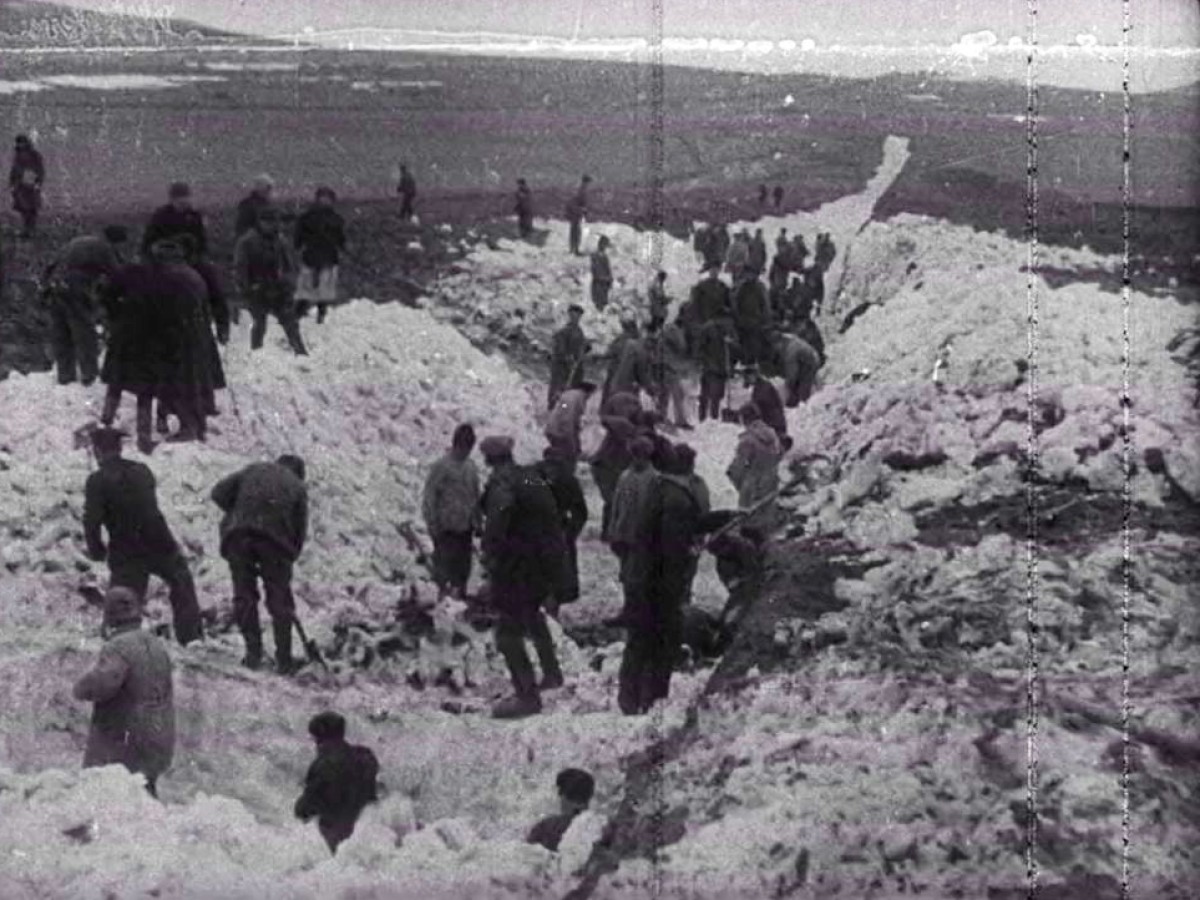Visual History of the Holocaust
January 27 and 29, 2023
How do images leave an impression on our visual memory and in what specific ways do moving images do this? This is the guiding question behind this project coordinated by the Ludwig Boltzmann Institute for Digital History and the Austrian Film Museum. In many respects, the project explores the boundaries of what can be said, shown and done. Starting from an extreme case – images made by Allied photographers during the liberation of concentration camps and other sites of major National Socialist crimes – the project "Visual History of the Holocaust" aims to reconsider once again curation in the digital era.
What must one pay attention to when transferring these images from an analog to a digital space? How do they maintain their evidential strength, and what do they gain and lose? Does the transfer end at the digital copy or is that only where it begins? What possibilities are opened in the digital realm? What role can be played by machine automated methods of film analysis that are based on machine learning and artificial intelligence? What roles must and should they play? How does one contextualize the images in the space and time they were made? What is their relationship to the photographs, text documents and witness testimonies that accompanied their creation? And what relationships do they have with the documentary and feature films, artworks, graphic novels, video games and internet memes based on them? How does digital space change these relationships? How and for whom should one make accessible the images, documents and other artifacts related to them? And what happens if one does not only make select examples of these images accessible, but all of them? How does the role of curators and archivists change if, in addition to the keys to the archive, one also places all the search aids and latest investigative tools in users’ hands? And, last but not least, does this change visual memory?
There are images that one cannot forget. But should one not also remember how and through whom they were created, who used them for what, where they have left traces, what other images they replaced and what unavailable images they supplanted? Using digital means, how does one aim for a media-critical understanding of images whose afterlife began long ago but is far from over? (Ingo Zeichner, Michael Loebenstein / Translation: Ted Fendt)
The project Visual History of the Holocaust: Rethinking Curation in the Digital Age is funded as Innovation Action under the EU Horizon 2020 program.
Please note: Beginning on January 27, the exhibition End of Testimony? at the Haus der Geschichte Österreich (House of Austrian History) will explore the complex relationship between witnesses and interviewers.
How do images leave an impression on our visual memory and in what specific ways do moving images do this? This is the guiding question behind this project coordinated by the Ludwig Boltzmann Institute for Digital History and the Austrian Film Museum. In many respects, the project explores the boundaries of what can be said, shown and done. Starting from an extreme case – images made by Allied photographers during the liberation of concentration camps and other sites of major National Socialist crimes – the project "Visual History of the Holocaust" aims to reconsider once again curation in the digital era.
What must one pay attention to when transferring these images from an analog to a digital space? How do they maintain their evidential strength, and what do they gain and lose? Does the transfer end at the digital copy or is that only where it begins? What possibilities are opened in the digital realm? What role can be played by machine automated methods of film analysis that are based on machine learning and artificial intelligence? What roles must and should they play? How does one contextualize the images in the space and time they were made? What is their relationship to the photographs, text documents and witness testimonies that accompanied their creation? And what relationships do they have with the documentary and feature films, artworks, graphic novels, video games and internet memes based on them? How does digital space change these relationships? How and for whom should one make accessible the images, documents and other artifacts related to them? And what happens if one does not only make select examples of these images accessible, but all of them? How does the role of curators and archivists change if, in addition to the keys to the archive, one also places all the search aids and latest investigative tools in users’ hands? And, last but not least, does this change visual memory?
There are images that one cannot forget. But should one not also remember how and through whom they were created, who used them for what, where they have left traces, what other images they replaced and what unavailable images they supplanted? Using digital means, how does one aim for a media-critical understanding of images whose afterlife began long ago but is far from over? (Ingo Zeichner, Michael Loebenstein / Translation: Ted Fendt)
The project Visual History of the Holocaust: Rethinking Curation in the Digital Age is funded as Innovation Action under the EU Horizon 2020 program.
Please note: Beginning on January 27, the exhibition End of Testimony? at the Haus der Geschichte Österreich (House of Austrian History) will explore the complex relationship between witnesses and interviewers.
Related materials
Link Project website
Project partner Ludwig Boltzmann Institute for Digital History
Research project Visual History of the Holocaust
Project partner Ludwig Boltzmann Institute for Digital History
Research project Visual History of the Holocaust
